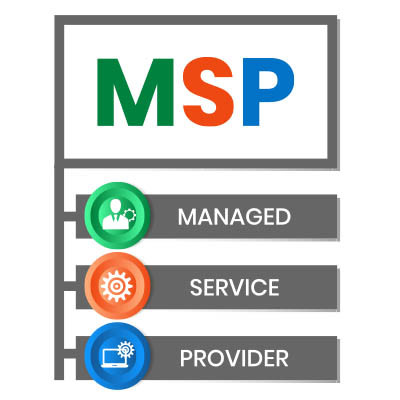Business owners love to point to time theft and quiet quitting as reasons for lost productivity, seeing them as a decline in work ethic. Unfortunately, they are not seeing the forest through the trees in a lot of cases. Let's take a look at quiet cracking; or the slow, gradual breakdown of a knowledge worker's mental and emotional well-being under constant workplace pressure. It's not a sudden burnout, but a steady, silent erosion that's happening more than you might think.
Tritek Networks Blog
Today (as of when this was posted) is Friday, so ideally, the feeling in the office would be one of happy anticipation for the weekend… but what if a server crashes, and work gets put on pause, but all the deadlines still stand? This would undoubtedly put a damper on the weekend, and that’s the least of your worries. Who’s going to fix the server?
This kind of situation is precisely why modern businesses can’t afford to wait for things to go wrong, and need to have a resource on their side to proactively address these kinds of issues and catastrophes.
There’s a lot that any small business owner has to manage at any given moment, so the last thing you need is to have technology issues or challenges throw a wrench into things… and when they do, you certainly don’t need any delays in fixing the problem.
That’s how traditional IT support works, and nowadays, it's simply insufficient for business needs. Fortunately, today’s technology also enables us to address these support needs more effectively. Let’s review how managed services offer a more proactive and strategic (and therefore more financially sound) option.
Business owners have a lot going on in their workday, and with so many duties and responsibilities, adding technology troubles to the mix only makes it all the more frustrating when your IT doesn’t work the way it should. That said, you cannot let the laissez-faire attitude prevail. In fact, lazy IT practices can make real problems significantly worse.
Let’s say you have all the knowledge, time, energy, resources, and expertise in technology management in the world. Would you want the responsibility of managing your company’s IT? Today, we’re exploring some of the more plausible reasons why managing your own technology solutions just doesn’t make sense—and how a managed service provider can help.
Businesses used to think that it was worth waiting around for technology solutions to break before servicing them. In fact, it was such a commonplace practice that it’s still prevalent (although to a significantly reduced degree) today. We want to look into why it just makes sense to leave the old break-fix IT model behind in favor of a more proactive approach.
While you want to believe the best of your business, including your IT staff, it’s important to recognize when they’ve reached their limit regarding knowledge and workload. To combat these limitations, you can work with an outsourced IT provider. Combining the two can help you meet your business’ technology needs.
Starting a new business is an exciting experience, but choosing the right technology from the beginning plays a big role in how successful and secure your business will be. A strong IT plan keeps your operations running smoothly, protects your data, and makes it easier to grow over time. This month, we’re sharing practical steps to help you build one.
Technology plays a critical role in how businesses operate today. From websites and servers to email systems and cloud applications, most companies rely on a wide range of digital tools to stay productive and competitive. But what happens when something suddenly stops working?
That’s where IT monitoring comes in; and it’s more important than many people realize.
Want to run a business without technology? You’re in the wrong line of work; technology is so deeply ingrained in business that it’s not going anywhere. From your communication platform to your point-of-sale software, you need technology, and where there’s technology, there will inevitably be a need for technicians.
Businesses rely on a ton of technology for their operations and, as such, rely on support to help keep these tools working effectively. We would know! We proudly provide our neighbors with the technical assistance they need to succeed. As we’ve done so, we’ve noticed that there are some support needs we frequently attend to.
Let’s review some of them and why they are so vital for you to have assistance in managing, preferably, from us!
Imagine owning an elevator and only fixing it when it completely breaks down. Sounds ridiculous, right? Well, that’s basically what businesses do when they rely on a break/fix IT strategy.
Break/fix IT is exactly what it sounds like, you don’t call in the experts until something goes wrong. On the surface, it might seem like a way to save money, but in reality, it’s a recipe for stress, lost revenue, and major headaches. Let’s talk about why this approach just doesn’t make sense anymore.
With technology being such a crucial element of many businesses and their operations, it only stands to reason that it ultimately pays to invest in and maintain it. That said, many businesses lack the resources in one way or another to properly manage their IT independently.
In these cases, it pays to outsource some or all of your IT support, and for various reasons. Let’s go over three of the major benefits to be had.
Technology is so ingrained in business that it’s nigh-impossible to operate without it. For this reason, cyberattacks on businesses are even more devastating, as they can halt operations and expose important data. Today, we want to highlight five common problems you might encounter with your cybersecurity.
Picture this: you or a team member encounters a technology issue in the middle of the workday. Simple, you might think… just call your in-house IT department. However, the members of your IT team are visibly overworked, scurrying around the office, trying to get some of the tasks off their to-do lists. They’re visibly running out of time, patience, or, most likely, both. It isn’t a good time to bother someone for help; that’s obvious, but what option is there?
Chances are that your business’ technology has gotten more complex in the past few years. This complexity has likely created some confusion on how best to manage your technology. Couple this with the more sophisticated threats that have been developed over that time, and there is a real risk to the welfare of your business coming from the technology you depend on daily. Today’s blog will discuss how increased complexity can be managed competently.
Computer problems aren’t just annoying, they are a major impediment to a business’ overall productivity. There are several common problems that can slow down your computer, each with its own signs, causes, and fixes. This month we’re going to look at some of these problems and what the solutions are for them.




















